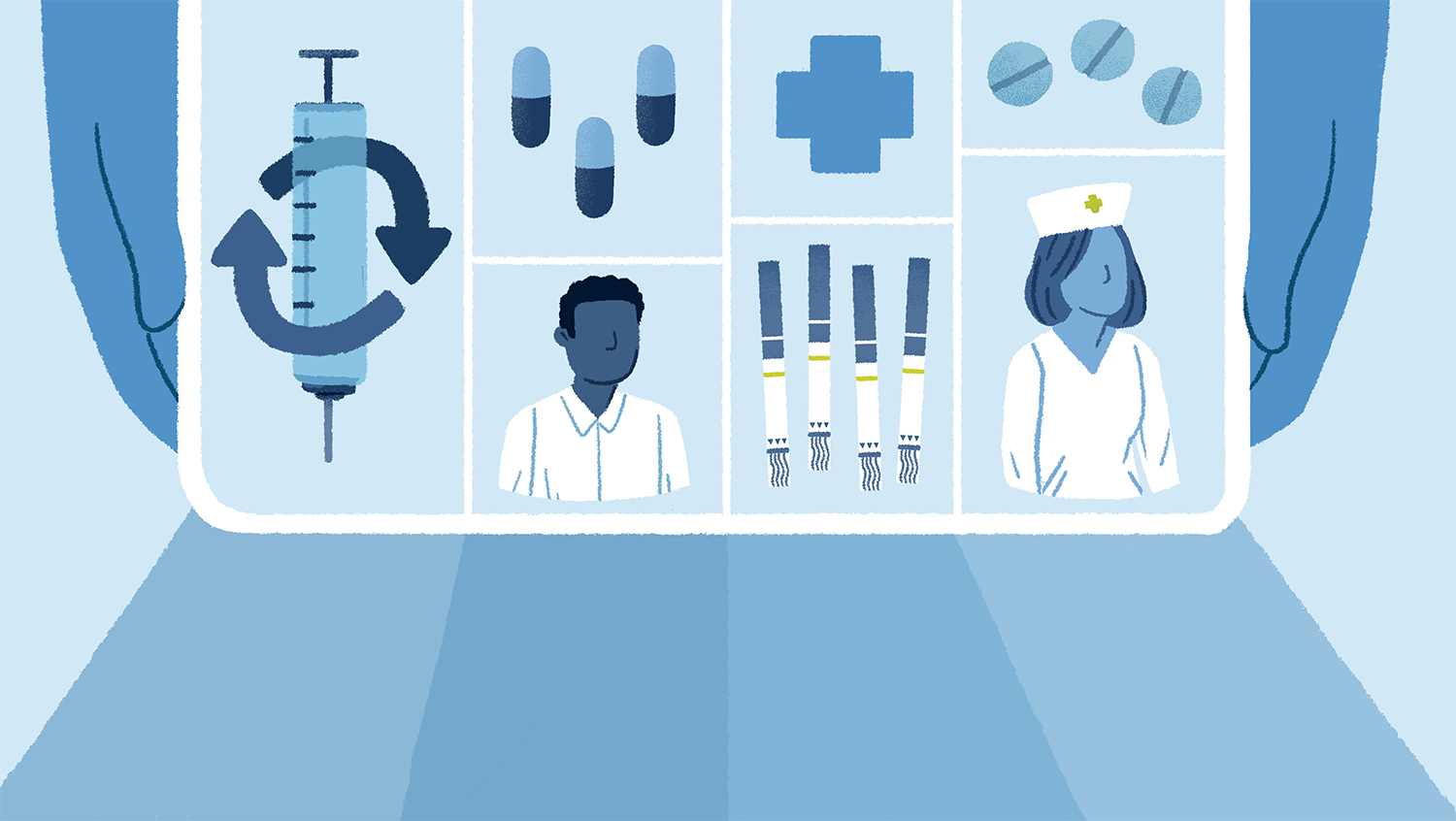Principles of Harm Reduction in Young Adults with Substance Use Disorder
December 29, 2020
By Ilima Loomis

Taryn Johnson
Providers can create more entry points to treatment and ultimately save lives by offering youth-centered harm reduction services in clinical settings.
Harm reduction services, such as syringe services programs, overdose education, naloxone distribution, fentanyl test strips, and PrEP, help reduce poor health outcomes and deaths from substance use in adults. Yet few of these programs are designed around young people’s needs, and many exclude them altogether.
Harm reduction is a set of strategies to reduce the negative consequences of drug use, including diseases and bacterial infections, overdose, and other health issues.
By creating more youth-centered programs and offering harm reduction services in clinical settings, care providers can save lives and create more entry points into treatment and healthcare for young people who use drugs, says Brandon Marshall, epidemiologist and associate professor at Brown University School of Public Health.
“We want to get folks connected to harm reduction programs early on to set them up for a lifetime of engagement with the whole continuum of care,” Marshall says. “There’s no reason to withhold these evidence-based strategies from young people just because they’re young.”
Marshall and colleagues outline new principles of harm reduction in young adults with substance use disorder (SUD). The article, published in a recent Pediatrics supplement, outlines two principles developed out of an interdisciplinary convening by the Grayken Center for Addiction at Boston Medical Center (BMC).
1. Harm reduction services are critical to keeping young adults alive and healthy and can offer opportunities for future engagement in addiction treatment.
Compared to their adult counterparts, young adults who use drugs are at higher risk of many adverse health outcomes such as HIV and overdose. In fact, as many as 40% of overdose deaths occur before age 34. Yet young people are less likely than older adults to engage with harm reduction services.
Connecting with these programs at a young age can improve health outcomes over an entire lifetime, Marshall says.
“Harm reduction is a part of a continuum of care for this population that includes treatment and can, in fact, be a pathway into treatment,” he says.
One solution is to offer more harm reduction services in clinical settings, rather than limiting them to community-based programs that are often difficult for young people to access, says Simeon Kimmel, MD, an infectious disease and addiction medicine specialist at BMC and the paper’s first author.
While clinical medicine is beginning to accept the importance of harm reduction perspectives in caring for people with SUD, there needs to be wider acceptance and integration of those strategies among pediatricians, Kimmel says.
“There are lots of encounters with the healthcare system, and harm reduction approaches offer an opportunity to meet people where they’re at.”
“Young people are engaged with their pediatricians, they’re engaged with school nurses,” he says. “There are lots of encounters with the healthcare system, and harm reduction approaches offer an opportunity to meet people where they’re at.”
2. The evidence-based harm reduction strategies available to older adults with substance use disorder should be available to young adults.
Clinicians risk shutting down opportunities for engagement and losing young patients’ trust by focusing on abstinence-based messaging. And harm reduction programs that are available too often exclude young people with minimum age limits of 18 or 21, notes Marshall, even though “there’s no evidence-based or scientific reason for those age limits.”
But even when services are legally available to them, many youths stay away from programs that primarily serve adults. Barriers include avoidance of law enforcement, mistrust of adults in authority, and a fear of being around older adults who use drugs, Kimmel says.
Many are also afraid that engaging with services could put their housing, education, or relationships at risk. “Young people may be particularly concerned about having their substance use exposed or having their service utilization revealed to their partners or the adults in their lives,” Kimmel says.
Many young adults also feel that existing harm reduction programs are too narrow in scope and don’t address the full spectrum of concerns that affect their substance use, such as mental health issues, housing insecurity, and family and peer relationships, Marshall says.
While removing age limits on harm reduction services is “a good start,” what’s really needed is programming designed to meet the needs of youth from the ground up and is sensitive to young people’s intersecting identities — such as LGBTQ+ and youth of color, Marshall says.
While rare, successful models exist, including an entirely youth-led organization he worked with in Canada, which provides overdose services and HIV prevention to adolescents and young adults.
“We want to get to a point where programs are not just ‘friendly’ to youth, but young people have actually been integral to their development and implementation,” Marshall says.
Read the entire series: “Establishing Principles of Care for Young Adults with Substance Use Disorder.”


